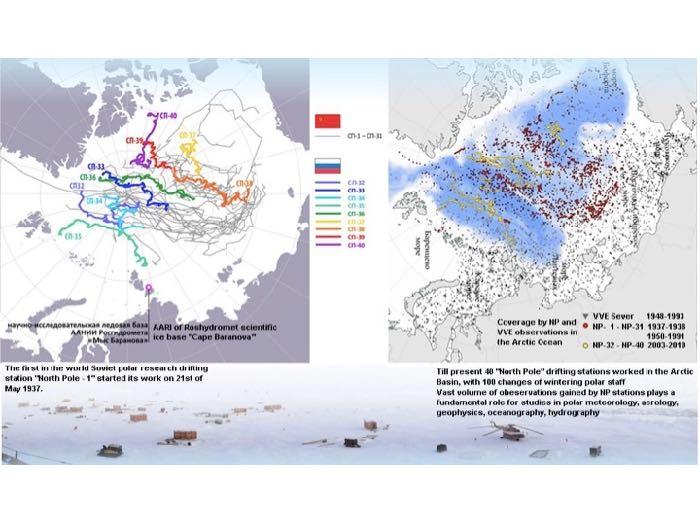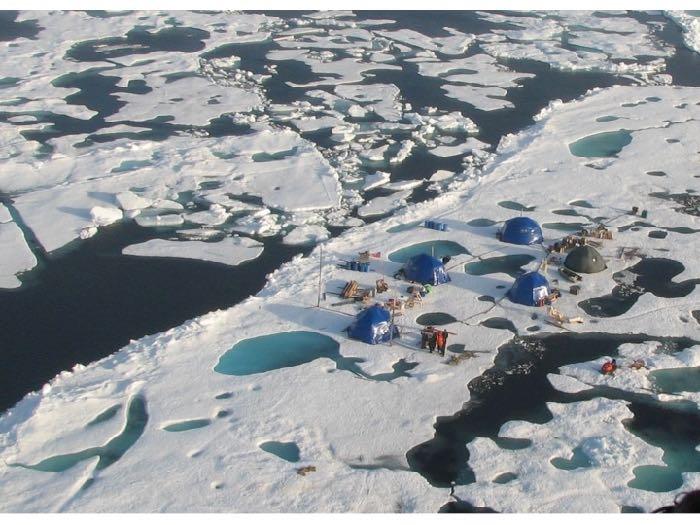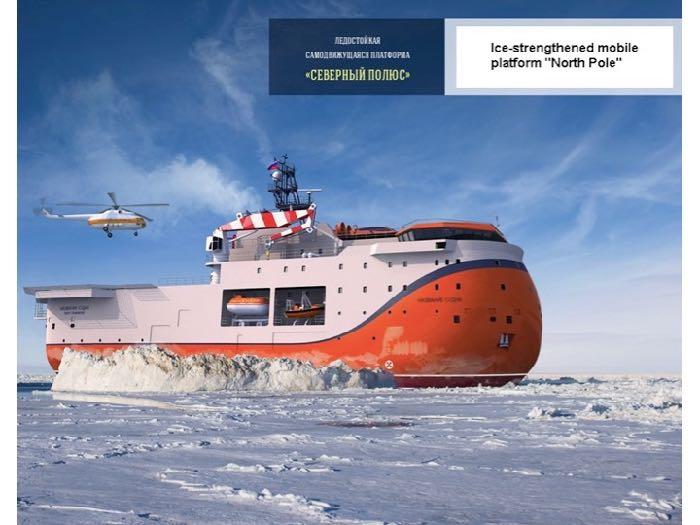Being on a Russian ice breaker has been a truly unique experience. One of the most fascinating parts has been learning about the history of Russian Arctic science.
I had no idea that USSR/Russian scientists have been leading drift expeditions on the Arctic sea ice for decades! The first Russian 'North Pole' Drift Station was conducted from 1937-1938. Overall, 40 drift station projects took place as part of the 'North Pole' program. Most of these drift stations were occupied for 2-3 months, but some of them lasted a year or longer. The program had three main eras: 1937-1938, 1950-1991, and 2003-2013.

These drift expeditions were similar in approach to the MOSAiC expedition. A ship, helicopter, or plane brought researchers to the sea ice, where they set up an ice camp. Researchers and support crew lived and worked at the drift station for months or even years as the ice camp drifted across the Central Arctic Ocean. Of course there are differences between these drift stations and the MOSAiC expedition, but the general idea is the same.
One of the key differences from MOSAiC is that in most cases, the ship or helicopter departed the drift station location right after unloading scientists, gear, and instruments. The scientist and drift station crew constructed sheds and small cabins on the ice. The ice floe they chose was the homebase for science and all other activities of life until they were picked up months later. If they chose poorly or conditions changed, it could be a very dangerous situation.
One person who worked on drift station described the experience of a crack opening up in the middle of the ice floe. The drift station was split in half with an open water lead about 15 meters wide forming between the two parts of the floe. Some of the people, and the food, were stuck on one side. The other people, and the cooking and heating fuel, were stuck on the other side. After waiting many days, the ice in the lead was just barely thick enough for them to walk across. They could feel it bending and moving under their weight. One person fell through the ice; they had to quickly pull him back on to the ice and hustle across the rest of the ice to get him into dry clothes. Oh -- and all of this happened in the dark of polar night!

Living and working full-time on the ice, polar bears could also be a major challenge. Most of the drift stations had camp dogs, which helped to keep the polar bears away and warn people when the bears were around. But it is tricky when there is no boat to retreat to when the polar bears come around. Sometimes, the cabins were broken into by polar bears while the scientists were busy working. One story recounted returning to a cabin that had been ransacked. The polar bear tore into everything. Everything except the jar of honey, that is.
Besides producing numerous fascinating and entertaining stories, these drift stations were the key to building Russian scientific knowledge of the Central Arctic Ocean. All were equipped with instruments and scientists studying the ocean, ice, and atmosphere. Additional research focused on charting currents, ocean chemistry, biology and ecology, and even the health impacts for people living on the ice and through the polar night. Research from these drift stations spans nearly 80 years and provides an incredibly detailed, long-term data set. Though this sort of drift station is no longer possible in the changing Arctic, Russian research continues in the Central Arctic Ocean. Hopefully, collaborations between Russia, Germany, the U.S.A. and the 16 other countries involved in MOSAiC will allow for more access and wider use of the data from the past drift stations and ongoing Russian research.
Many thanks to Vladimir Sokolov, from the Arctic and Antarctic Research Institute (AARI) in St. Petersburg, Russia and others who presented to us this information about the 'North Pole' Drift Stations.
I find it interesting, confusing, and a bit troubling that these Russian drift stations aren't very well known in the United States or Western Europe. The way that the MOSAiC Expedition is described often positions it as something utterly unique, that nothing like this has occurred for over 100 years dating back to the Fram Expedition. It seems there is much more nuance than that, and that the Russian drift stations have largely been excluded from the narrative. As an educator, I think it is really important for students and teachers alike to question these sorts of popular narratives and think about what might be missing from the story.
Writing this now from my partners' home in Washington state, I find myself thinking about a different, more problematic sort of erasure. These lands and waters that I call my part-time home are the ancestral lands of the Suquamish, S'Klallam, and Duwamish peoples. Before and intertwined, many other Coast Salish peoples fished in these water, harvested plants in these forests, and were stewards of this place. Nathan and I now live on the edge of the Suquamish reservation, not far from two different S'Klallam reservations. Their inherent rights to this land were negotiated through the Point Elliott Treaty and the Point No Point Treaty. Through the reservation system and later policies, the boundaries of their land claims shrank, and shrank, and shrank again. But that does not mean their relationships and rights to these lands and waters were extinguished. Despite the Treaty of Point Elliott, the Duwamish do not have a reservation because they are not recognized by the federal government and most of their lands have been swallowed by the city of Seattle. Despite concerted efforts to eliminate them from this place, Coast Salish peoples are still here. The have survived; they have refused to be erased and replaced. That is an important part of a big story that needs knowing. One possible first step you can take to learn more about the Indigenous lands you live and work on is to look up your zip code at Native Land Map, where you can see traditional territories, languages, and treaties that are relevant to where you are. It isn't perfect, but it does help to illuminate the complex, difficult histories of the places we call 'home' and spark awareness of Indigenous presence and land rights.
Word of the Day In Russian, polyarnik refers to a polar explorer.
Education Extension Like sub-sea permafrost, Russian drift stations were a topic I didn't anticipate and thus I don't have any education resources lined up for it. Because they aren't very well-known in the United States, it is difficult to find any educational resources.
We watched two films about Russian expeditions in the Arctic. One focused on the Russian Drift stations, and followed a researcher who was with us aboard the Fedorov. It is called “Полярник“ or "Polar Explorer." The Fedorov shows up a lot in the documentary, as it was the support vessel for the Drift Station where he worked. The other, called "Po Sledam" chronicles an effort by a Russian expedition team (including two people who were on the Fedorov with us) to find evidence of a prior expedition that was lost on a small Arctic Island. I recommend both of them. They shared the files with us, and I would be happy to figure out a way to share them for educational purposes if you can't access them another way.
We were told that the next step in Russian Arctic exploration is the development of a really cool vessel called the 'North Pole ice-strengthened mobile platform' which is something like an ice breaker but modified to maximize space as a research platform and to easily freeze into the sea ice. It would be interesting to encourage students to do some research on this research platform. How much information can they find? Do different students come back with different information?



Comments